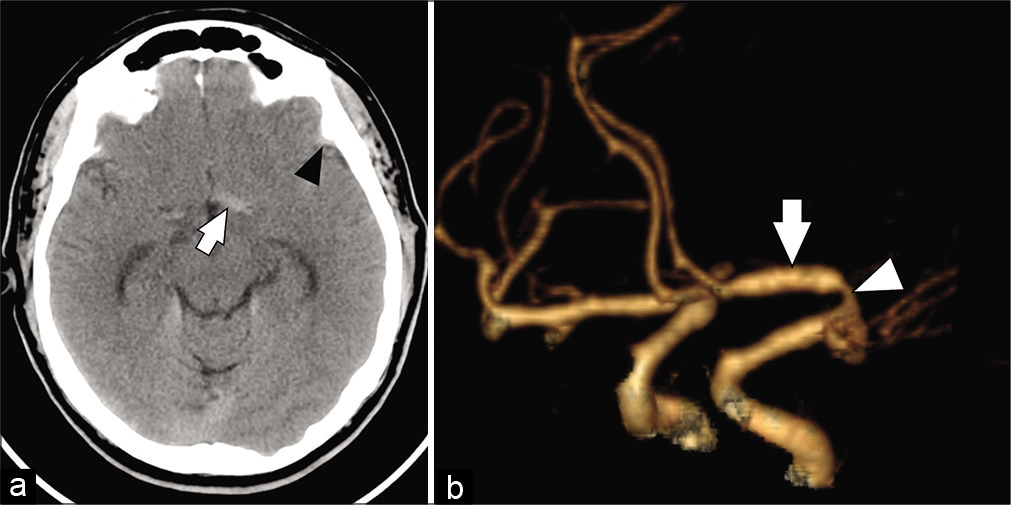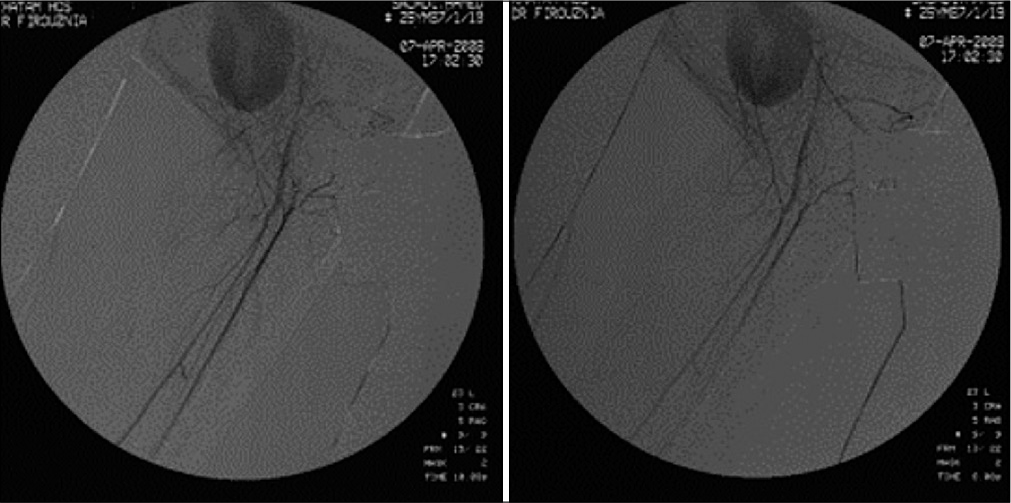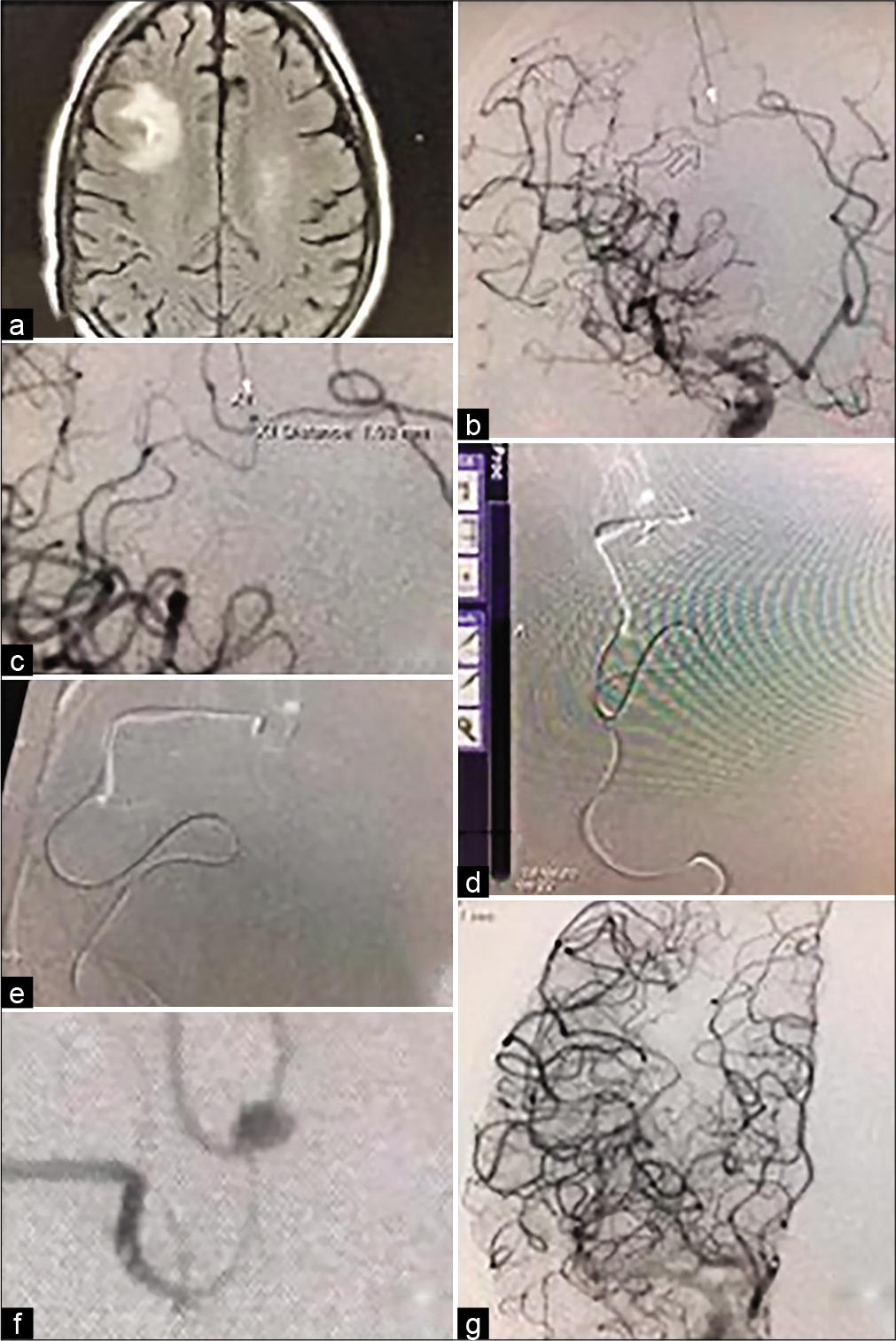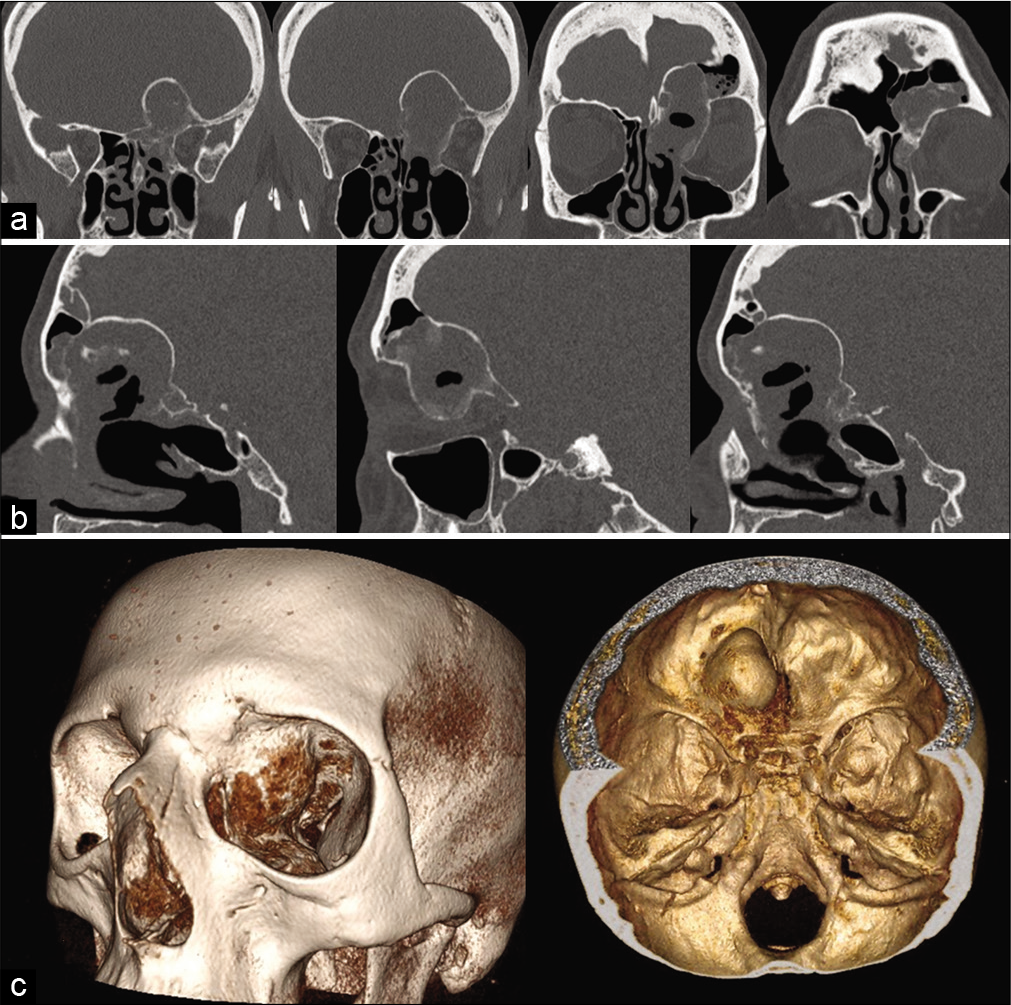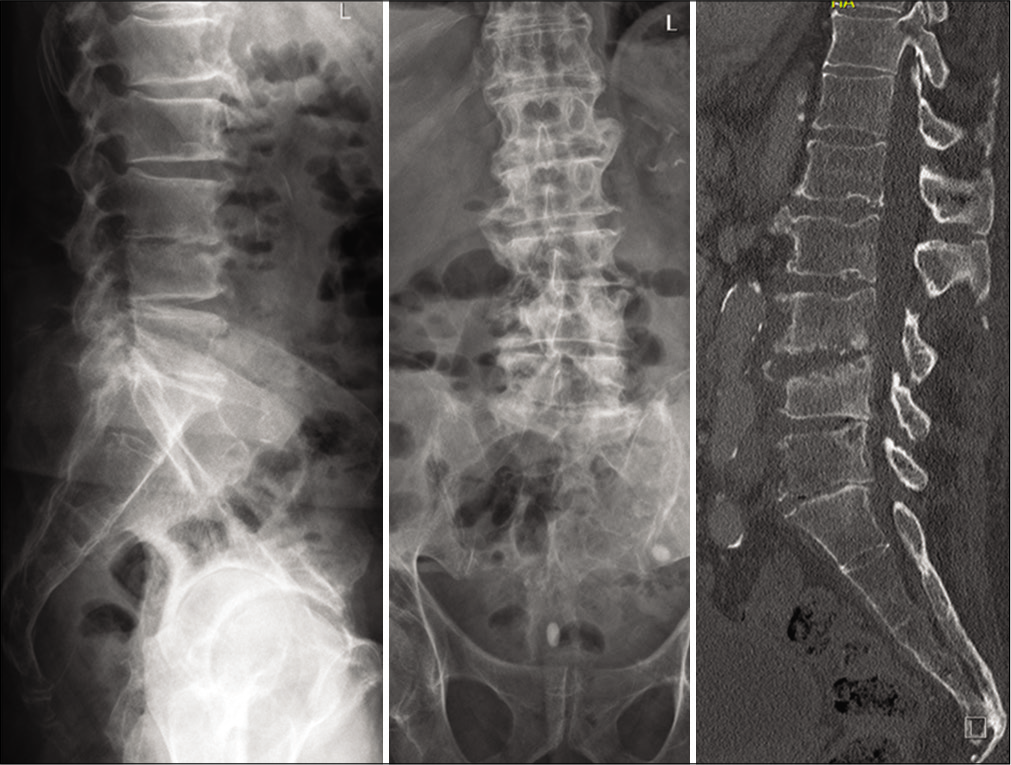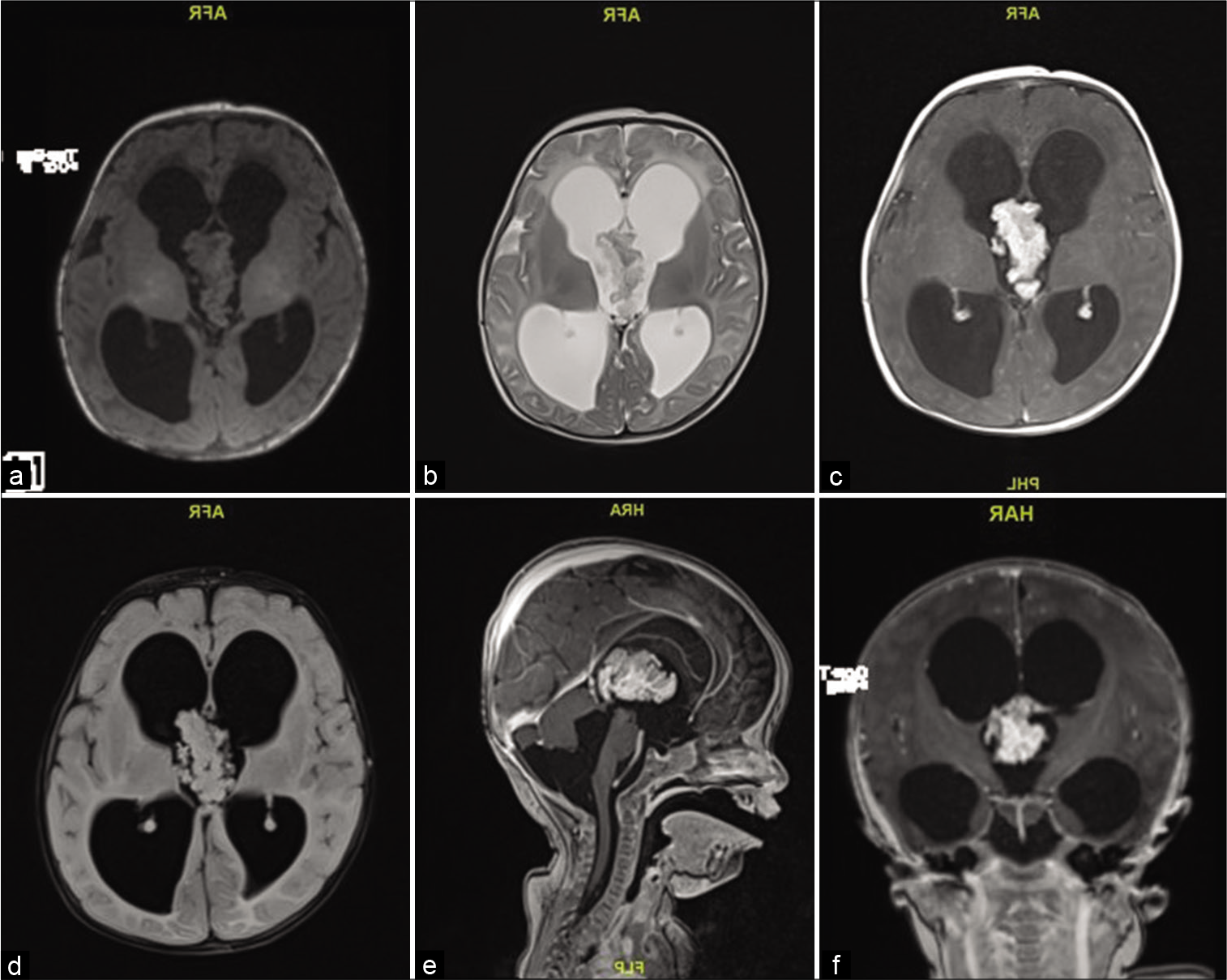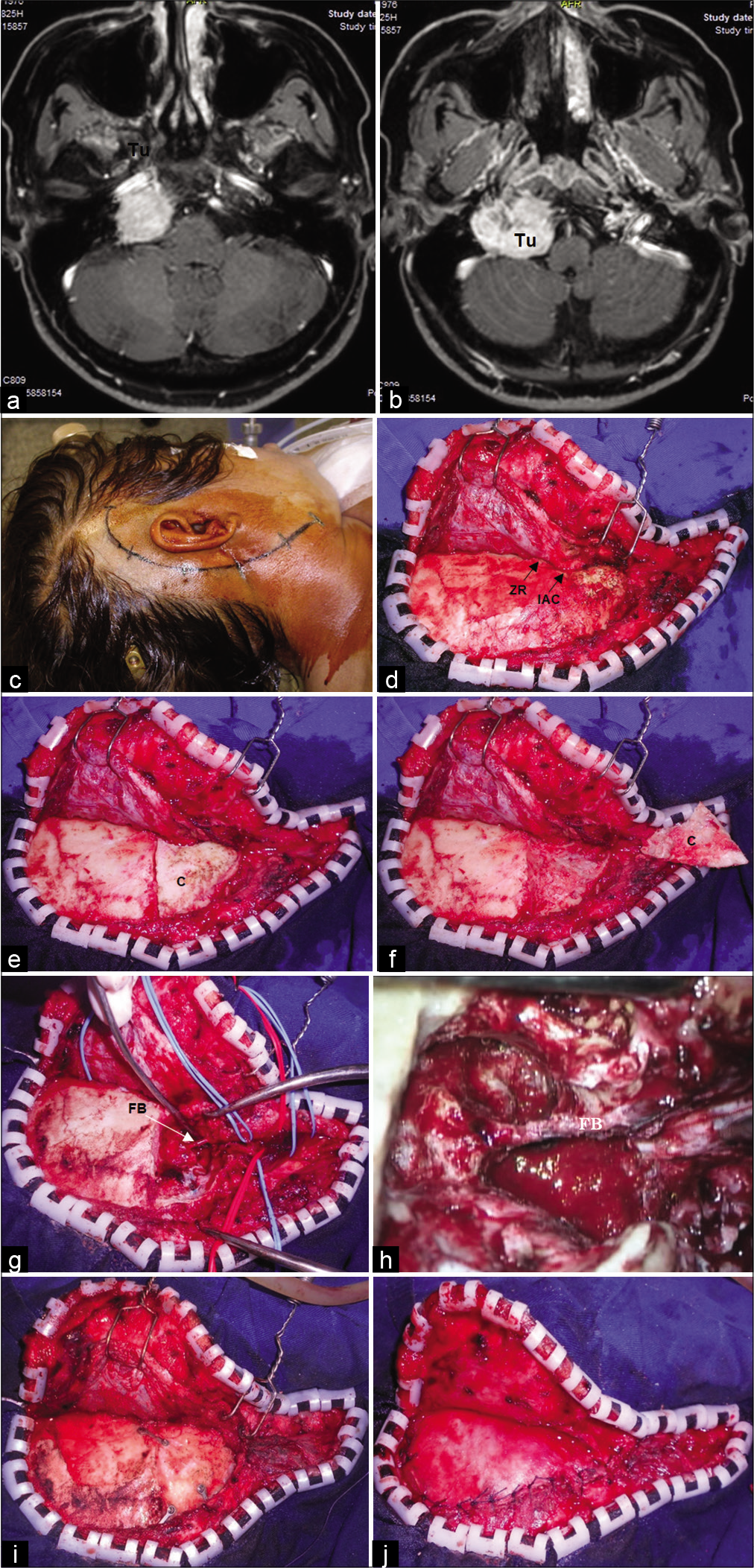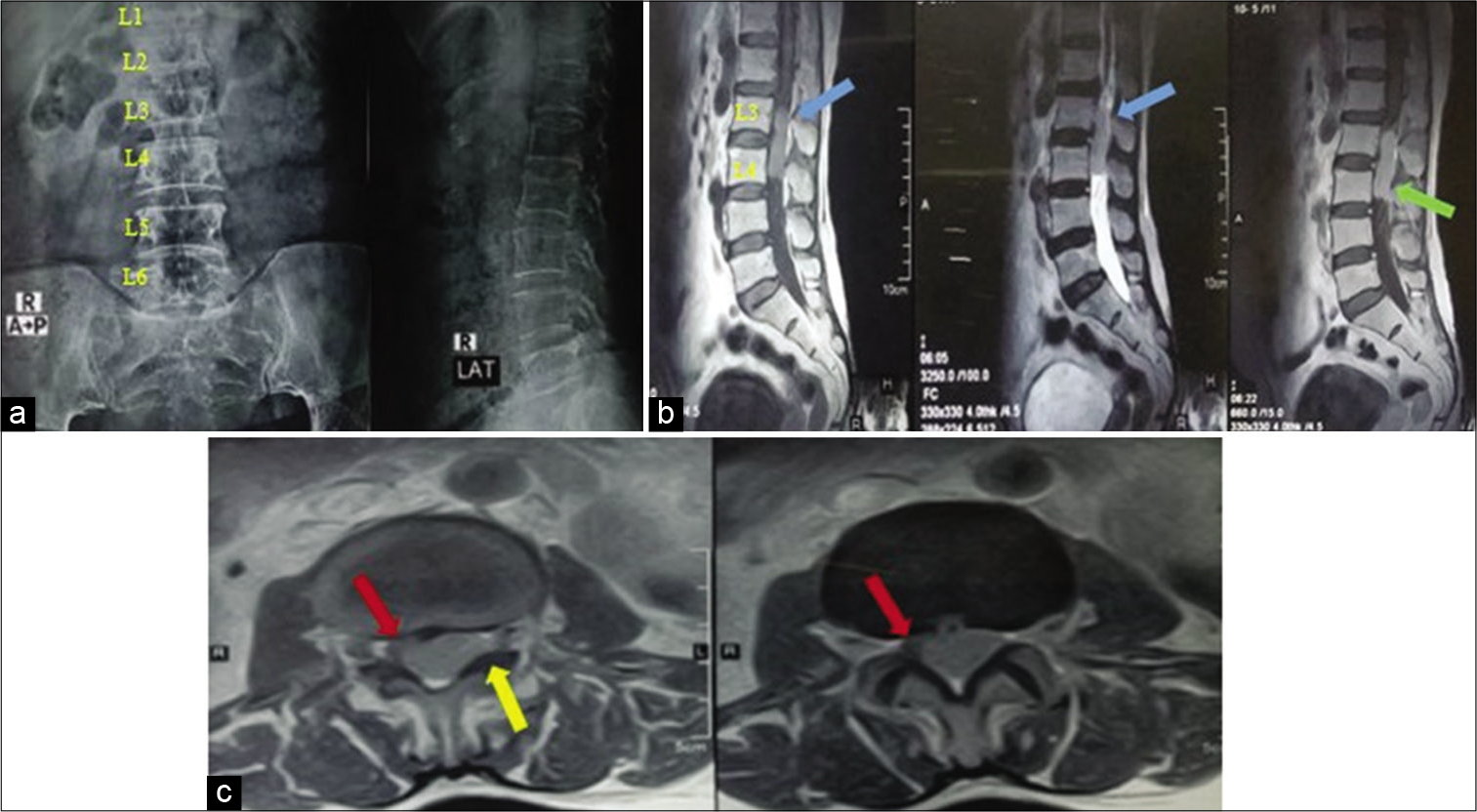Transient third cranial nerve palsy after pipeline shield treatment of a ruptured anterior cerebral artery dissecting aneurysm: Case report
Date of publication: 30-Sep-2021
Background: Intracranial dissecting aneurysms (IDAs) are rare vascular lesions usually arising from the posterior circulation. The anterior cerebral artery (ACA) is an unusual location for this pathology. Even rarer is the occurrence of a transient de novo third cranial nerve (CN) palsy after flow-diverting device (FDD) treatment of an ACA dissecting aneurysm.
Peroneal/posterior tibial nerves delayed dysfunction due to traumatic popliteal artery pseudoaneurysm resulting from trivial stab wound: A case report
Date of publication: 30-Sep-2021
Background: Popliteal artery pseudoaneurysms due to stab wounds are extremely rate. Even more infrequently, they can contribute to the compression of multiple peripheral nerves.
A rare case of Streptococcus anginosus infectious intracranial aneurysm: Proper management of a poor prognosis
Date of publication: 30-Sep-2021
Background: Infectious intracranial aneurysms (IIAs), sometimes referred to as cerebral mycotic aneurysms, are an uncommon but feared compilation of bacterial endocarditis, occurring in up to 5% of all bacterial endocarditis cases. While IIAs carry a low risk of rupture, a ruptured mycotic aneurysm carries devastating neurologic consequences with up to an 80% mortality rate secondary to subarachnoid and intracerebral hemorrhage.
Will the high acceptance rate of coronavirus disease 2019 vaccine in Morocco accelerate the recovery of neurosurgical practice?
Date of publication: 30-Sep-2021
Background: In developing countries, where there is a chronic shortage of neurosurgeons and medical infrastructures, the pandemic has taken a heavy toll on neurosurgical activities. In the absence of a curative treatment, reaching herd immunity through mass vaccination campaigns is the best hope we have of ending this pandemic. Therefore, the purpose of our study was first to assess the effect of coronavirus disease 2019 (COVID-19) outbreak on neurosurgical services of a Moroccan tertiary hospital. Secondarily, we aimed to describe current vaccination compliance rate in our country, and its impact on the recovery of neurosurgical practice.
Fronto-orbito-ethmoidal intradiploic meningiomas: A case study with systematic review
Date of publication: 30-Sep-2021
Background: Primary intradiploic meningiomas, extra-axial tumors arising primarily in the skull, are rare. The authors reported a complex case of intradiploic intraosseous metaplastic meningioma of the left medial wall and orbital roof with the left frontal sinus invasion and left ethmoidal body bone substitution. The authors also conducted a systematic review concerning diagnosis and management of patients affected by purely calvarial intradiploic meningiomas along with a focus on fronto-orbito-ethmoidal ones.
Spondylodiscitis due to anaerobic bacteria Veillonella parvula: Case report and literature review
Date of publication: 30-Sep-2021
Background: While pyogenic spondylodiscitis due to Gram-positive aerobic bacteria and its treatment is well known, spondylodiscitis caused by anaerobic Gram-negative pathogen is rare. In particular, the spondylodiscitis caused by Veillonella species is an absolute rarity. Thus no established management recommendations exist.
Retained foreign needle in the thoracic spinal canal in a child: Case report
Date of publication: 30-Sep-2021
Background: The presence of retained foreign bodies in the spinal canal has been reported in the literature. They are attributed to retained pieces of medical equipment after surgery, or, following trauma, to residual bullets, glass fragments, or knife blades. Although some retained materials do not cause any neurological deficits in the short run, others may become symptomatic months later.
Persistence of communicating hydrocephalus post choroid plexus tumor resection: Case reports and review of literature
Date of publication: 30-Sep-2021
Background: Hydrocephalus is the most common presentation of choroid plexus tumors; it is thought to be caused either by mass effect obstructing the cerebrospinal fluid pathways or secretory properties of the tumor. In these case reports, we present two cases of choroid plexus tumors with persistence of communicating hydrocephalus postoperatively and review similar reports in the literature.
Surgical management of embolized jugular foramen paragangliomas without facial nerve transposition: Experience of a public tertiary hospital in Brazil
Date of publication: 30-Sep-2021
Background: Jugular foramen paragangliomas (JFP) treatment represents a challenge for surgeons due to its close relationship with facial nerve (FN), lower cranial nerves (LCN), and internal carotid artery. Due to its hypervascularization, preoperative tumor embolization has been indicated.
Isolated late intradural cauda equina metastasis of renal cell carcinoma
Date of publication: 30-Sep-2021
Background: The cauda equina (CE) is the most common site for intradural extramedullary metastasis from systemic malignancies such as lung, breast, and thyroid carcinomas. However, renal cell carcinomas (RCC), with their high metastatic potential, are rarely responsible for CE metastatic lesions. Here, we report an intradural cauda equina mass, as the first and only site of metastasis of a renal cell carcinoma.


